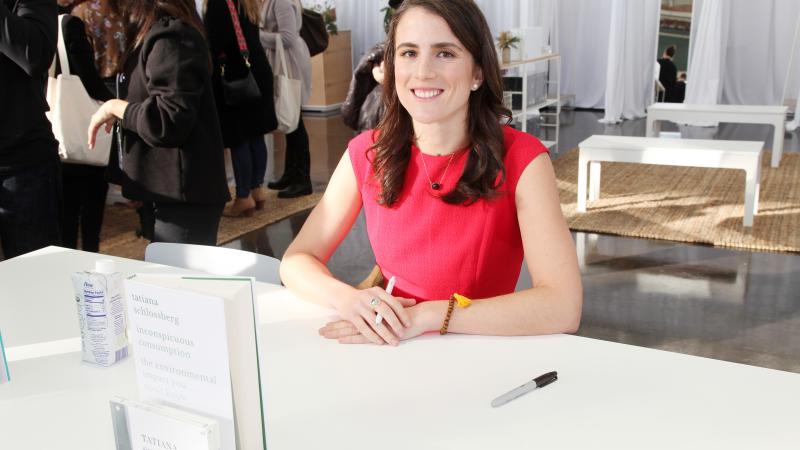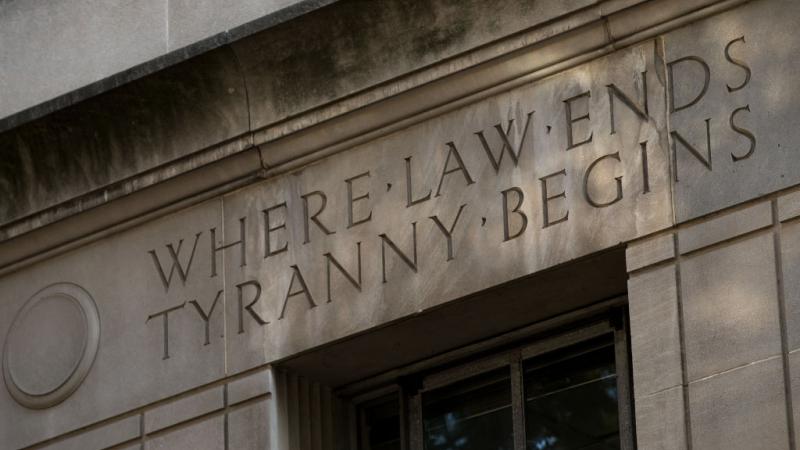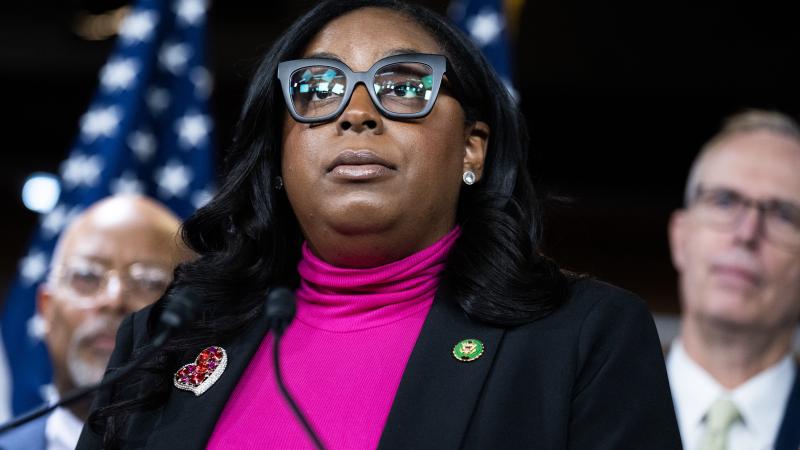Fauci emails point to February 2020 phone call as possible pivot for lab-leak theory
Researchers had originally suspected possible lab-leak origin; weeks after phone call they discounted it.
Recently released government emails from Dr. Anthony Fauci, the nation's infectious disease chief, point to an early February 2020 phone call as a possible pivotal juncture for the "lab-leak" hypothesis of COVID-19's origin, a theory that was roundly discounted last year but is now rapidly gaining momentum.
The thousands of pages of emails, obtained via Freedom of Information Act requests by both Buzzfeed and the Washington Post, have made headlines this week for their detailed glimpse into the management of the earliest days of the pandemic in the U.S., including the scrambling of federal officials to adequately size up the danger of the virus and the growing concerns from scientific experts and lay citizens over COVID-19's threat.
Fauci, the longtime director of the federal National Institute of Allergy and Infectious Diseases, is shown in the emails juggling rapidly shifting responsibilities, conferring with fellow infectious disease experts while offering advice to average citizens and managing a growing portfolio of media appearances.
Yet the emails have also offered glimpses into Fauci's possible concerns in the earliest days of the worldwide outbreak: In early February of last year, for instance, he was urgently conferring with colleagues on the topic of "gain-of-function" research — experiments designed to enhance the pathogenicity of viruses to study their potential infectiousness in human cells — suggesting that, at least at the outset of the pandemic, Fauci and others may have harbored acute concerns that the virus could be linked to such experiments.
Also in the emails is evidence of a conference call that occurred in early February that consisted of a heavyweight lineup of infectious disease experts apparently discussing, at least in part, a possible human-engineered origin of the virus. That discussion involved several individuals who would later issue a prominent and widely cited smackdown of the lab-leak origin theory of COVID-19.
Discussion conducted "in total confidence," details "not to be shared"
The emails show that, the night prior to the call on Jan. 31, Fauci had been contacted by Kristian Andersen, an immunology and microbiology professor at the Scripps Research Institute. Andersen shared with Fauci his and his colleagues' earliest assessments of the "phylogenetic analyses" they had performed on the SARS-Cov-2 virus.
Noting that the virus looked "totally normal" on first glance, Andersen wrote: "The unusual features of the virus make up a really small part of the genome (<0.1%) so one has to look really closely at all the sequences to see that some of the features (potentially) look engineered."
"I should mention that after discussions earlier today, Eddie, Bob, Mike, and myself all find the genome inconsistent with expectations from evolutionary theory," Andersen continued, adding that the team would have to "look at this much more closely and there are still further analyses to be done, so those opinions could still change."
Subsequent emails dated Feb. 1 show a "teleconference" being organized by Jeremy Farrar, the director of Wellcome, a global charity that boasts it supports science to solve urgent health challenges. Farrar in the email warns that "information and discussion" in the call "is shared in total confidence and not to be shared until agreement on next steps."
The list of participants in the Feb. 1 call reads like a who's who of infectious disease research, including several researchers who have participated in viral manipulation research. Among the callers that joined Fauci:
- Ron Fouchier, who in 2011 modified the H5N1 virus to show it could spread through airborne transmission in mammals;
- Stefan Pöhlmann, whose work includes developing "cell culture systems that allow predicting transmissibility and thus pandemic potential of emerging viruses;"
- Eddie Holmes, a virologist at the University of Sydney who has "spent 30 years using molecular genetic techniques to understand the determinants of cross-species pathogen transmission and emergence."
National Institutes of Health Director Francis Collins may have also participated in the call, the emails suggest.
The specific details of what was discussed in the call are largely indiscernible from the emails. Notes on the discussion — from Fouchier, Farrar, Collins, University of Edingburgh Prof. Andrew Rambaut, and Fauci — are almost completely redacted. None of the participants in the call that could be reached by email — including Fauci, Andersen, Fouchier and others — responded to requests for comment on the discussion, including what the scientists talked about during the reportedly hour-long discussion.
"There is clearly much to understand understand in this," Farrar writes after the call amid heavy redactions. "This call was very helpful to hear some of our current understanding and the many gaps in our knowledge."
Subsequent science article said SARS-Cov-2 "clearly" not from a lab
A little over a month after that call, several of its participants published a paper in the medical journal Nature Medicine pointedly refuting claims and suspicions that the novel coronavirus may have emerged from a lab.
In the paper, Andersen, Holmes, Rambaut and Robert Garry (the latter of whom was scheduled to be on the call) along with W. Ian Lipkin (the director of the NIAID's Center for Research in Diagnostics and Discovery) claim that their analyses "clearly show[ed] that SARS-CoV-2 is not a laboratory construct or a purposefully manipulated virus."
"It is improbable that SARS-CoV-2 emerged through laboratory manipulation of a related SARS-CoV-like coronavirus," the researchers write in the paper, arguing for one that "genetic data irrefutably show that SARS-CoV-2 is not derived from any previously used virus backbone," what would be a likely signifier of manmade experimentation.
The findings — a sharp reversal from Andersen's earlier postulation on SARS-Cov-2's origins — were cited by major media outlets such as USA Today and Forbes to knock down the burgeoning lab-leak theory. (Josie Golding, the lead epidemiologist at Jeremy Farrar's Wellcome Trust who was present on some of the post-conference emails, said in public statements that the research "end[ed] any speculation about deliberate genetic engineering.”)
Vincent Racaniello, a virology professor at Columbia University and one of the authors of the seminal textbook Principles of Virology, told Just the News that there was nothing conspiratorial about Andersen's differing conclusions from one month to the next.
"Andersen screwed up, he made a mistake, and didn't think carefully before spreading his initial views online," Racaniello told Just the News via email. "I frankly don't care what one scientist thinks about anything. I always say 'trust science, not scientists.' No matter what their training, scientists can be wrong."
"He realized his mistake and corrected it, yes, this is how science works," he added.
Racaniello said that scientists have discovered "a ton of evidence for a natural origin of SARS-CoV-2," including nearly-identical viruses found in wild bats, the absence of SARS-Cov-2 samples in any known laboratory prior to December 2019, and the presence of multiple viral lineages in Wuhan early on in the pandemic.
"Most of the virologists that I know are convinced that the virus came from nature," Racaniello said, arguing that pressuring Chinese authorities on the possibility of a lab leak "only serves to further alienate China and that is not, in the end, a wise policy. We need to work with them to find the animal source of the virus."
Richard Ebright, meanwhile—the Board of Governors Professor of Chemistry and Chemical Biology at Rutgers University—argued that "all scientific data related to the genome sequence of SARS-CoV-2 and the epidemiology of COVID-19 are equally consistent with a natural-accident origin or a laboratory-accident origin."
"This was clear already in January 2020, and has been clear at every point in time from January 2020 through the present," he said, adding: "All evidence available today was available twelve months ago, and most evidence available today was available fifteen months ago."
Jeffrey Martin, the division chief of Clinical Epidemiology and Health Services Research at the University of California, San Francisco's Department of Epidemiology and Biostatistics, suggested that the back-and-forth over the possibility of a lab leak was ultimately of secondary importance to the larger question of lab safety protocols.
"The point is that origination from a lab is theoretically possible and we now know what can happen if leakage from a lab does occur," he said via email. "A respiratory-based virus can quickly sweep across the world. The functional manifestation of this whole mess is that any lab working on these viruses needs strict and regular international monitoring, like what is done with nuclear weapon materials."
The lab-leak hypothesis was for roughly the first year of the pandemic widely disparaged and dismissed, with scientists worldwide pointing to a natural origin as the likeliest explanation for the virus's emergence.
Political and scientific interest in the theory has exploded in recent weeks — with even President Joe Biden signaling support for at least exploring the theory — leading to both a flurry of interest in the hypothesis as well as an ongoing reckoning among media officials and scientists as to why the theory was ignored for so long.
One scientist told NPR last month that the theory "got jumbled up together with some of the more crazy aspects of then-President Donald Trump," leading many scientists to shy away from it; another told Vanity Fair this week that Trump's endorsement of the theory generated an "antibody response" in scientists who were politically opposed to him, leading to widespread rejection of the theory.
















